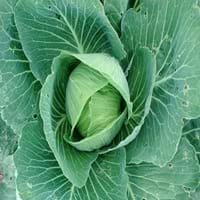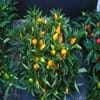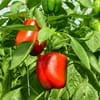Origin
Mexico, Central America, South America
Europe
Types
red bell pepper, yellow bell pepper, green bell pepper
Chinese Cabbage, Napa Cabbage
Habitat
Open areas
Farms, Fields, Subtropical climates
USDA Hardiness Zone
Not Available
4-7
Sunset Zone
A1, A2, A3, H1, H2, 1a, 1b, 2a, 2b, 3a, 3b, 4, 5, 6, 7, 8, 9, 10, 11, 12, 13, 14, 15, 16, 17, 18, 19, 20, 21, 22, 23, 24
A1, A2, A3, H1, H2, 1a, 1b, 2a, 2b, 3a, 3b, 4, 5, 6, 7, 8, 9, 10, 11, 12, 13, 14, 15, 16, 17, 18, 19, 20, 21, 22, 23, 24
Habit
Oval or Rounded
Clump-Forming
Flower Color
White
Yellow
Flower Color Modifier
Bicolor
Bicolor
Fruit Color
Yellow, Red, Green, Purple, Orange, Light Yellow, Chocolate, Ivory
Not Available
Leaf Color in Spring
Green
Light Green
Leaf Color in Summer
Dark Green
Not Available
Leaf Color in Fall
Dark Green, Black
Not Available
Leaf Color in Winter
Not Available
Not Available
Leaf Shape
Elliptic
Oblong Circular Round
Plant Season
Spring, Summer, Fall
Spring, Summer, Fall, Winter
Sunlight
Full Sun
Full Sun, Partial Sun
Type of Soil
Loam
Loam, Sand
The pH of Soil
Neutral
Neutral
Soil Drainage
Well drained
Well drained
Bloom Time
Indeterminate
Spring, Summer
Tolerances
Drought
Drought
Where to Plant?
Container, Ground, Pot
Container, Ground
How to Plant?
Seedlings, Transplanting
From bulbs, Seedlings
Plant Maintenance
Medium
Low
Watering Requirements
Do Not over Water
Keep ground moist, Keep the ground moist but not water-logged, Requires regular watering
In Summer
Lots of watering
Lots of watering
In Spring
Moderate
Moderate
In Winter
Average Water
Average Water
Soil Type
Loam
Loam, Sand
Soil Drainage Capacity
Well drained
Well drained
Sun Exposure
Full Sun
Full Sun, Partial Sun
Pruning
Remove damaged leaves, Remove dead leaves, Remove shoots
Remove damaged leaves, Remove dead leaves
Fertilizers
fertilize in growing season, Requires high amount of nitrogen
Nitrogen, Phosphate, Well-rotted manure
Pests and Diseases
Anthracnose, Bacteria wilt, Bacterial leaf spot, Cercospora leaf spot, Powdery mildew, Red blotch
Alternaria Leaf Spot, Anthracnose, Bacterial soft rot, Blackleg, Damping off, Damping-off, Downy mildew, Flea beetle, Flea Beetles, Fungal Diseases, fungus, Red blotch, Watery soft rot
Plant Tolerance
Salt
Drought, Heat Tolerance
Flowers
Insignificant
Showy
Flower Petal Number
Single
Single
Fragrant Bark/Stem
No
Yes
Foliage Texture
Medium
Coarse
Foliage Sheen
Glossy
Not Available
Attracts
Not Available
Beetles, Flies, Insects
Allergy
Hives, Rash
Throat itching
Aesthetic Uses
Showy Purposes
Not Available
Beauty Benefits
Good for skin, Good for skin and hair, Improve hair condition, Improve skin condition, Improve skin tone
Not Available
Environmental Uses
Air purification, Food for animals, Food for insects
Air purification, Food for animals, Food for insects
Medicinal Uses
cholesterol-lowering, Low calories, Vitamin C
Anti-oxidant, Antioxidants, Digestion problems, Low calories, Nutrients, Skin Disorders
Part of Plant Used
Fruits
Fruits, Leaves
Other Uses
Used As Food
Food for animals, Used As Food, Used for its medicinal properties, Used as a spice, Used in salads
Used As Indoor Plant
No
No
Used As Outdoor Plant
Yes
Yes
Garden Design
Bedding Plant, Container, Edible, Herb / Vegetable, Mixed Border, Tropical
Container, Edible, Herb / Vegetable
Botanical Name
CAPSICUM annuum
BRASSICA rapa( Pekinensis Group)
Common Name
Pepper
Celery Cabbage, Napa Cabbage
In Hindi
शिमला मिर्च
अजवाइन गोभी
In German
Capsicum
Sellerie Kohl
In French
Capsicum
céleri chou
In Spanish
Pimiento
apio col
In Greek
Κοκκινοπίπερο
σέλινο Λάχανο
In Portuguese
cápsico
aipo couve
In Polish
papryka
seler Kapusta
In Latin
Capsicum
Brassica apium
Phylum
Magnoliophyta
Magnoliophyta
Class
Magnoliopsida
Magnoliopsida
Order
Solanales
Brassicales
Family
Solanaceae
Brassicaceae
Clade
Angiosperms, Asterids, Eudicots
Angiosperms
Tribe
Capsiceae
Brassiceae
Subfamily
Solanoideae
Not Applicable
Number of Species
Not Available
Importance of Capsicum and Celery Cabbage
Want to have the most appropriate plant for your garden? You might want to know the importance of Capsicum and Celery Cabbage. Basically, these two plants vary in many aspects. Compare Capsicum and Celery Cabbage as they differ in many characteristics such as their life, care, benefits, facts, etc. Every gardener must at least have the slightest clue about the plants he wants to plant in his garden. Compare their benefits, which differ in many ways like facts and uses. The medicinal use of Capsicum is cholesterol-lowering, Low calories and Vitamin C whereas of Celery Cabbage is Anti-oxidant, Antioxidants, Digestion problems, Low calories, Nutrients and Skin Disorders. Capsicum has beauty benefits as follows: Good for skin, Good for skin and hair, Improve hair condition, Improve skin condition and Improve skin tone while Celery Cabbage has beauty benefits as follows: Good for skin, Good for skin and hair, Improve hair condition, Improve skin condition and Improve skin tone.
Compare Facts of Capsicum vs Celery Cabbage
How to choose the best garden plant for your garden depending upon its facts? Here garden plant comparison will help you to solve this query. Compare the facts of Capsicum vs Celery Cabbage and know which one to choose. As garden plants have benefits and other uses, allergy is also a major drawback of plants for some people. Allergic reactions of Capsicum are Hives and Rash whereas of Celery Cabbage have Throat itching respectively. Having a fruit bearing plant in your garden can be a plus point of your garden. Capsicum has showy fruits and Celery Cabbage has no showy fruits. Also Capsicum is not flowering and Celery Cabbage is not flowering . You can compare Capsicum and Celery Cabbage facts and facts of other plants too.





